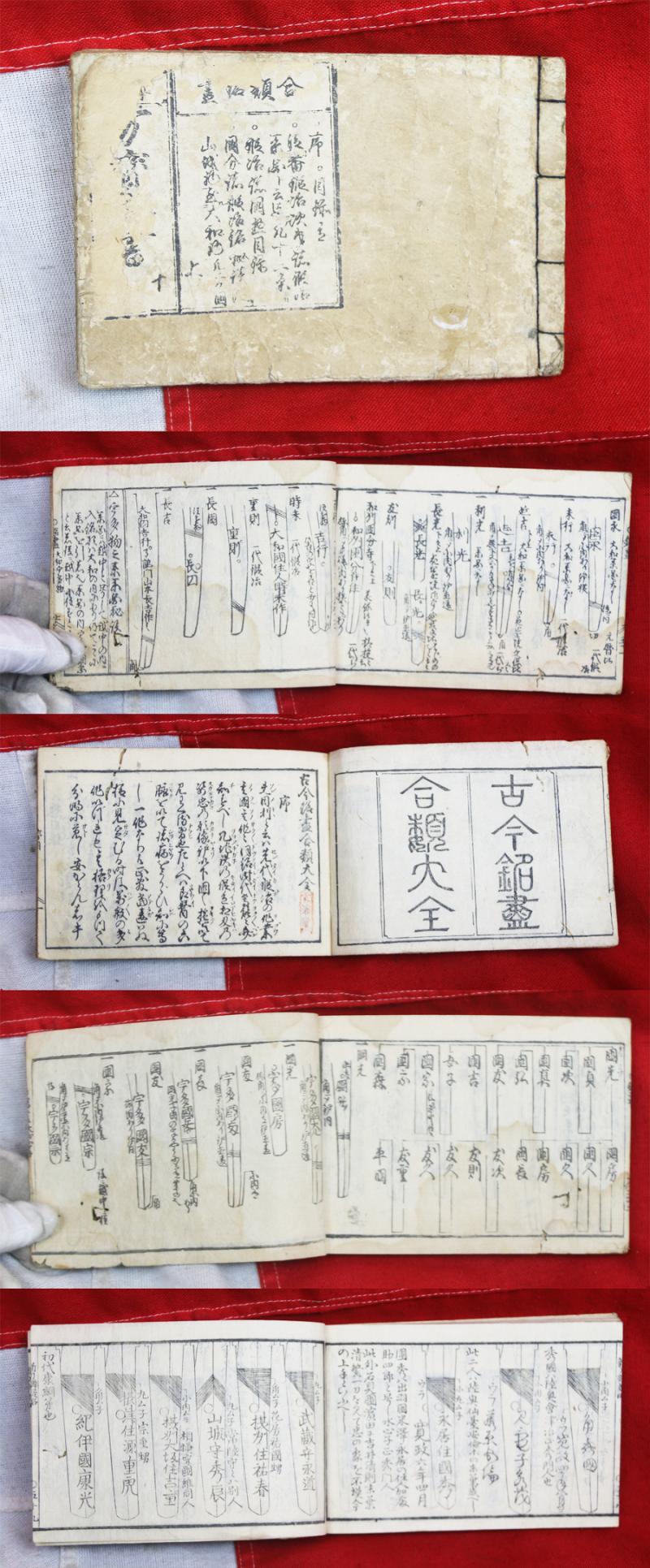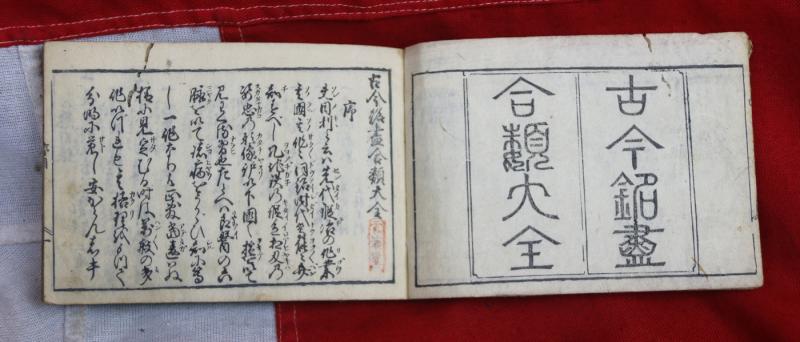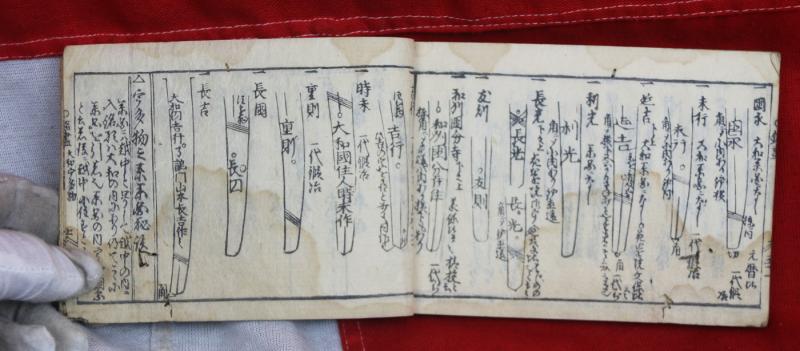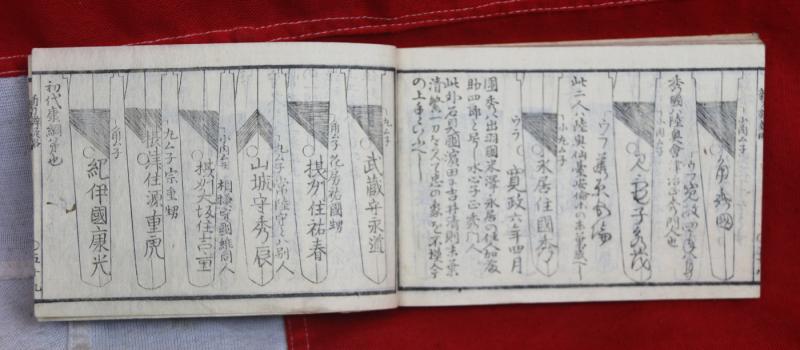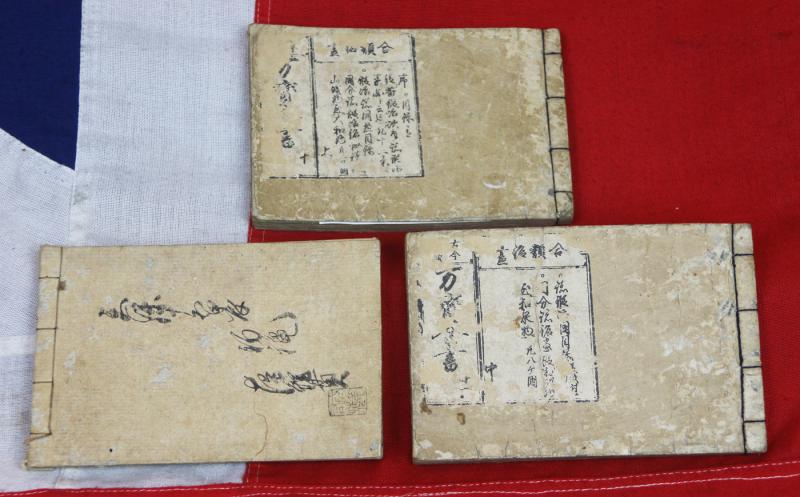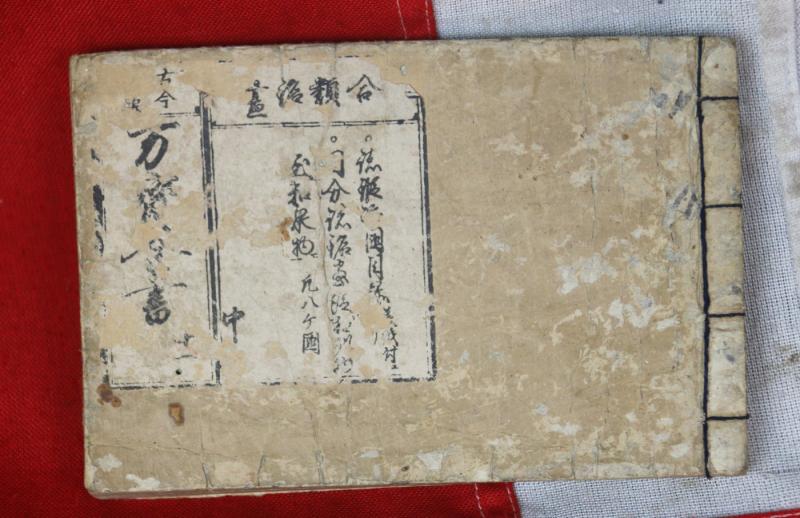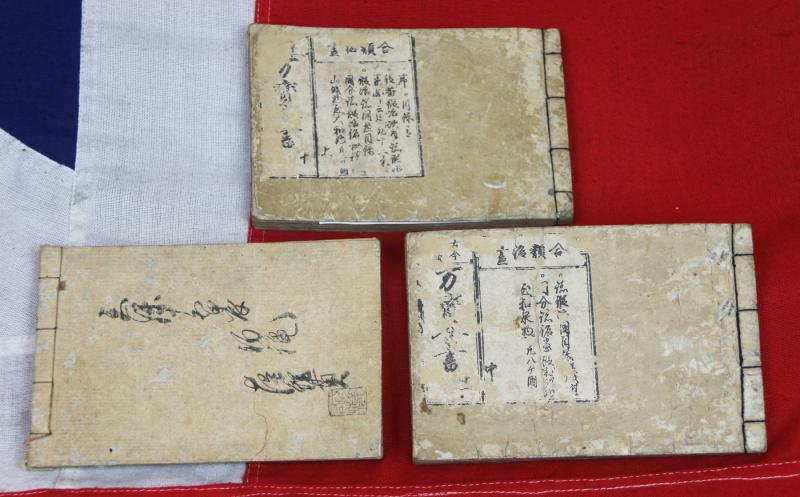A Rare Collection of Three Original Early Edo Woodblock Hand Printed Books of Samurai Sword Oshigata, of Blade Forms Hamon and Kanji. Ideal For A Scholar Of Samurai Sword Master Makers, Or, A Collector Of Rare Samurai Sword History. Rarely Seen In England
Genealogy, history, plus hundreds of Samurai blades, engravings, blade patterns plus more
swords and sword making. An early printing and of amazing interest. For the not only academic study of the signatures on blade tangs, plus hamon patterns and horimono {blade decorative carvings} by old samurai sword master swordsmiths, but to wonder of the unique aspects of each sword blade and how the reverential study of all aspects of sword making that is unique to Japan for over 1000 years. These superb and beautiful hand made volumes are thus also fascinating and unique works or art, in themselves, hundreds of years old, and created for the study and enjoyment of the art of the true samurai sword.
These volumes of hand made, hand woodblock printed books, detail many aspects of very special swords and their makers. For example, one section of the volumes show hand drawn versions of smiths hamon temper lines the specialised hardening process of every sword’s edge.
Yaki-ire: Hardening the Edge
The hardening of the edge is in many ways the most important, and the most difficult, aspect of the sword-making process. It is the hardening of the edge that gives the blade its ability to take and retain amazing sharpness. To begin with, the blade is coated in yakibatsuchi, a mixture of water, clay, ash, and other ingredients. Every smith has his own special recipe, often a closely kept secret. The yakibatsuchi is applied over the surface, thicker along the spine and thinner at the edge. Working in a darkened forge room using only the light of the glowing coals, the smith carefully heats the blade. As the temperature rises, crystal structures within the metal begin to change. The smith carefully observes the color of the glowing blade, and when the critical temperature is reached the sword is quickly quenched in a trough of water.
At the critical temperature, around 750°C, the structure of steel changes to austenite, a phase where carbon thoroughly combines with iron. When the blade is quickly cooled by quenching, austenite changes to martensite, the hardest type of steel. However, where the thick yakibatsuchi was applied, the blade will cool more slowly, turning not into martensite but instead forming ferrite and pearlite, which are softer and more flexible. Like the kawagane and shingane, this combination of hard edge and softer body is what gives the blade its desirable qualities.
The hardening of the edge also creates a visible change in the surface of the metal. Depending on the way in which the clay mixture was applied, a variety of effects can be produced. This edge pattern is called the hamon, and is one of the most important aspects in the aesthetic appearance of a blade. Like the jihada, each of these patterns has a specific name. Suguha, for example, is a very straight hamon, while sanbonsugi describes a zigzag line in clusters of three.
After the hardening of the edge, if the smith is satisfied with the appearance and quality of the blade, it is then passed on to the polisher, who will give the blade its final partial mirrorlike polish, with a mixture of light and shade, displaying many different shades of grey steel, and then other craftsmen will make the scabbard {saya} and sword mountings {koshirae}. Complete mountings have many elements, including metalwork such as tsuba and menuki, lacquered wood, silk cords and wrapping, and ray-skin grips. Though these are all works of art in themselves, and some of these fittings can indeed be almost priceless in their beauty quality and indeed value, in their own right, but the blade remains the true centerpiece of the finished work, and in fact the age of the blade dictates the time period of the age of the whole sword, despite how ever old or young it’s additional fittings may be. It combines to be an example of the ingenuity of centuries of Japanese smiths and their desire to achieve the perfect blend of technology and art.
Code: 24737
895.00 GBP


